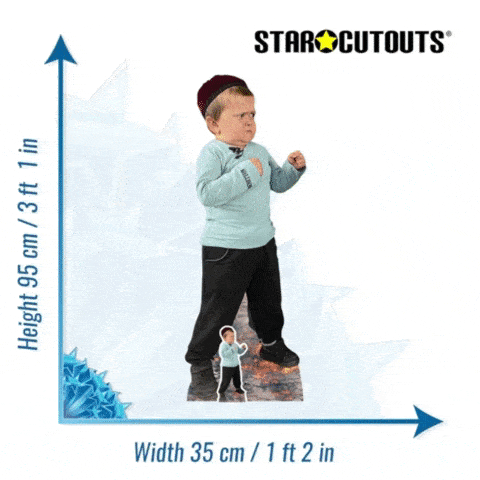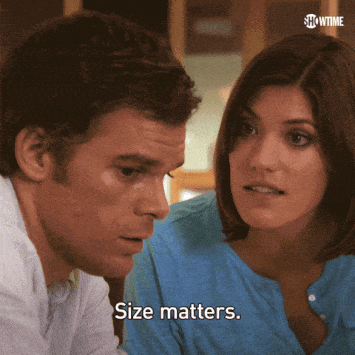When it comes to lifting, one of the most important pieces of equipment is the barbell.
Not only does it provide the main point of contact between the lifter and the weight, but it also plays a crucial role in determining the effectiveness of each exercise.
With so many different types of barbells available on the market, it can be overwhelming to determine which one is the best fit for you.
In this post, we’ll be discussing one of the key factors to consider when choosing a barbell: its length.
Let’s get started!
Table Of Contents
Why Is Barbell Length Important?
The length of a barbell is an important factor to consider because it affects both the exercises you can perform and your form while performing them.

Using a barbell that is too long or too short can throw off your balance and compromise your technique, which can lead to injury or a decrease in the effectiveness of your workouts.
Additionally, certain exercises, such as the bench press, require a specific barbell length to perform properly.
RELATED – Different Bench Press Bars + The Best Of Each Type!
Different Types Of Barbells Overall Length
There are a bunch of different-sized barbells available.
Here are some of the most common types:
- Olympic Barbells – A basic Olympic barbell is most commonly used in Olympic weightlifting competitions and is 7 feet long and weighs 20kg (44 lbs).
- Women’s Olympic Barbells – A women’s Olympic barbell length is shorter than standard Olympic bars at 6ft 6 inches and weighs less at 15kg (33 lbs).
- Standard Barbell – This type of barbell is 5-6 feet long and weighs anywhere from 15-25 lbs. The biggest difference between these bars and an Olympic barbell is the 1” diameter of the sleeves which don’t rotate.
- Powerlifting Bars – Powerlifting bars are designed specifically for powerlifting competitions, are around 86” long, and weigh 20kg (44 lbs) or 45 lbs.
- Deadlift Bars – This type of barbell is designed specifically for performing deadlifts and is longer and thinner than other types of barbells. Usually ranging around 90” long and weigh the same as most power bars.
Why Are Barbells Different Lengths?
The main reason that barbells have different lengths is due to different sports or goals that you might have.
Longer barbells such as the deadlift bar are to increase the flex you get from the bar while also allowing for a better starting position.

Powerlifting barbells and Olympic barbells have to abide by the rules set by the competition so all lifts are consistent across the board.
Some companies even make shorter barbells known as shorty bars for those that want more control over their lifts, or even just those with limited space in their home gym.
Overall, it makes sense that barbells have different designs to allow for better performance regardless of what your goals are.
What Length Barbell Do You Need?
Since there are different barbell lengths, it makes sense that figuring out the right length for you can be tough.

Luckily, there are a couple of points to consider to help you out.
Budget
If you have a limited budget, you might have to just invest in a barbell that fits regardless of its length.
The best option for most people will be a power bar with a center knurl as it allows for the highest versatility.
An Olympic barbell can be nice if you need it, but for most people, a multipurpose bar is going to be a better value and good enough overall.
RELATED – Can a Barbell Fit in a Car? – A Comprehensive Guide
Goals
This is even easier to figure out.
If you just plan on doing the squat, bench press, and deadlift – get a power bar. If you’re into Olympic weightlifting, pick up an Olympic bar. If you want to do a bit of both, a multipurpose bar is what you want.
Sport
Similar to your goals, the sport you compete in will determine what length barbell you might need.
A power bar for powerlifters, an Olympic bar for weightlifters, and a multipurpose bar for CrossFitters.
Size Of Your Weight Plates
The size of your weight plates is another consideration you have to make.
If you get a super long deadlift bar because you want to build a bigger deadlift, you have to have the right weight plates.
Deadlift bars have shorter loadable sleeve lengths than standard power bars so if you’re super strong and only have thicker bumper plates, you’re gonna have a bad time.
Another example is smaller 1” standard plates and standard bars. They’re much cheaper and smaller but aren’t compatible at all with Olympic bars.
So if you have a bunch of standard weight plates lying around and just need something for biceps, triceps, and shoulder training – a shorter standard barbell will work well for you.
Space Available
The space you have available is pretty important as nobody wants to smack their barbells around.
If you have a larger garage gym with storage for multiple bars, you can get anything you want.
If you’re in a one-car garage or smaller, investing in a shorty bar might be a better idea.
Frequently Asked Questions
Conclusion
Now I turn it over to you!
Did this guide help you with determining the right barbell length for your training?
Let me know in the comment section below, right now!
Until next time,
-Dante
Related: